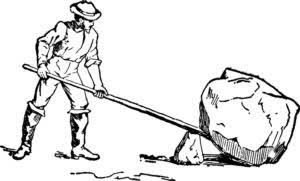How to Treat Overhead Expenses in Cost Accounting

Taking a few extra minutes to calculate your overhead costs can pay off both short term and long term. You’re in business to make money, and managing your overhead costs will help you do just that. Knowing your business overhead expenses also helps you be more proactive in managing your business.
For example, the property tax on a factory building is part of manufacturing overhead. While direct materials are included in total manufacturing costs, indirect costs must be calculated as well. For example, if you manufacture wood tables, the cost of wood would be a direct cost, while the cost of cleaning supplies would be considered an indirect material cost. At Deskera, manufacturing overhead is calculated by adding up all of the indirect expenses of producing inventory. It does not include direct labor or direct costs such as raw materials because these amounts can be traced directly back to a single product.
How Continuous Innovation Helps Manufacturers Make Great Products?
Under cost accounting, there is always an “allocation base” that links the overhead costs to the cost object. Since it is arduous to apply overhead cost to each individual cost object, such as a shoe, companies tend to use the average of an aggregate number of objects. So the shoe manufacturer might spread overhead costs over 10,000 shoes rather than calculate each one separately. To learn more about calculating and optimizing manufacturing overhead costs, contact us. If your manufacturing overhead rate is low, it means that the business is using its resources efficiently and effectively.

ABC allocates overhead costs to products based on the activities that consume those costs. To implement ABC, you first need to identify all of the activities that consume overhead costs. Then, you need to determine how much each activity costs and how much each product consumes of each activity. Finally, you allocate the costs of each activity to products based on their consumption of that activity. By following these tips, businesses can manage their product-level and factory-level overhead costs more effectively and improve their profitability.
Examples of Manufacturing Overhead
That is, such expenses increase with increasing production and decrease with decreasing production. Examples of Variable Overheads include lighting, fuel, packing material, etc. This is because there may be times when the Overhead Expenses may exceed the direct costs of producing goods or services. Not including your overhead costs when pricing a product or service can result in a significant manufacturing overhead costs include loss of profit if a product is priced too low. Conversely, an incorrect estimate of overhead costs might cause you to overprice your products, resulting in sluggish inventory movement and obsolete stock gathering dust on a shelf. Knowing your total manufacturing cost, including overhead can help you more accurately price products while also reigning in expenses when necessary.
The rent, utilities, and insurance for the factory are factory-level overhead, because they cannot be traced directly to the production of each t-shirt. Third, the distinction between direct and indirect costs is important for accounting and financial reporting purposes. By following these tips, manufacturers can more effectively manage their manufacturing overhead costs and improve their bottom line.
AccountingTools
Indirect Labor Overheads include the cost of labor that is not directly involved in the manufacturing of the product. That is, such labor supports the production process and is not involved in converting raw materials into finished goods. Indirect Labor includes quality control staff, purchasing officers, supervisors, security guards, etc. Accordingly, Overhead costs are classified into indirect material, indirect labor, and indirect overheads.
- Finally, you allocate the costs of each activity to products based on their consumption of that activity.
- Sum of direct materials and manufacturing overhead costs equals conversion costs.
- At Deskera, manufacturing overhead is calculated by adding up all of the indirect expenses of producing inventory.
- Direct expenses should always be calculated in your cost of goods sold; including them in your overhead costs would increase your expenses.
- Indirect costs vary widely, so always use your business’s internal data to determine the best inventory management decision.
- These are indirect costs that are incurred to support the manufacturing of the product.